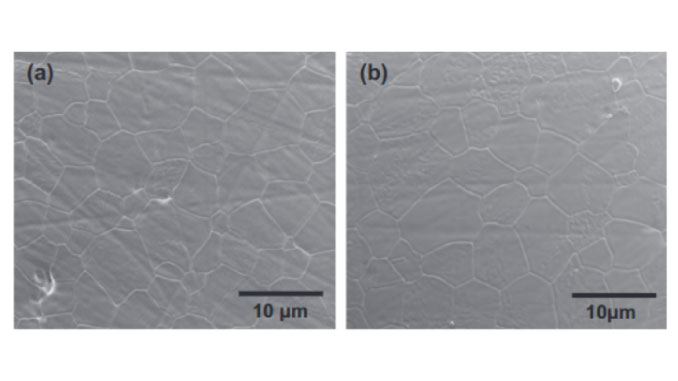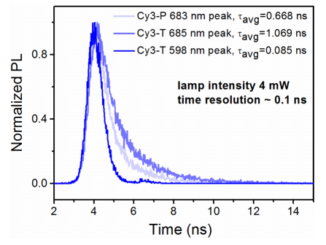
Improved ionic conductivity of zirconia-scandia with niobia addition
Abstract: The ionic conductivity and the crystalline structure of ZrO2-10 mol% Sc2O3- x mol% Nb2O5 solid electrolytes were investigated for x=0.25, 0.5 and 1. Dense specimens with relative densities higher than 95% were prepared by solid state reaction and sintered at 1500 degrees C for 5 h. Full stabilization of the cubic structure at room temperature was obtained for compounds with x=0.5 and 1, whereas the cubic and rhombohedric structures coexist for x=0.25. The highest ionic conductivity in codoped system was found for specimen containing 0.5 mol % niobium pentoxide, with the same order of magnitude as that of the parent solid electrolyte (zirconia-10 mol % scandia) in the high temperature range (above 600 degrees C). Preliminary investigation on phase stability shows that the isothermal conductivity of the new solid electrolyte remained constant up to 100 h at 600 degrees C. Niobium pentoxide addition was found to improve the overall ionic conductivity of zirconia-scandia solid electrolyte.
Author(s): Grosso, RL (Grosso, Robson L.); Reis, SL (Reis, S. L.); Muccillo, ENS (Muccillo, E. N. S.)
CERAMICS INTERNATIONAL
Volume: 43 | Edição: 14 | Páginas: 10934-10938 | Published: OCT 1 2017
PDF: Improved ionic conductivity of zirconia-scandia with niobia addition
DOI: 10.1016/j.ceramint.2017.05.131




